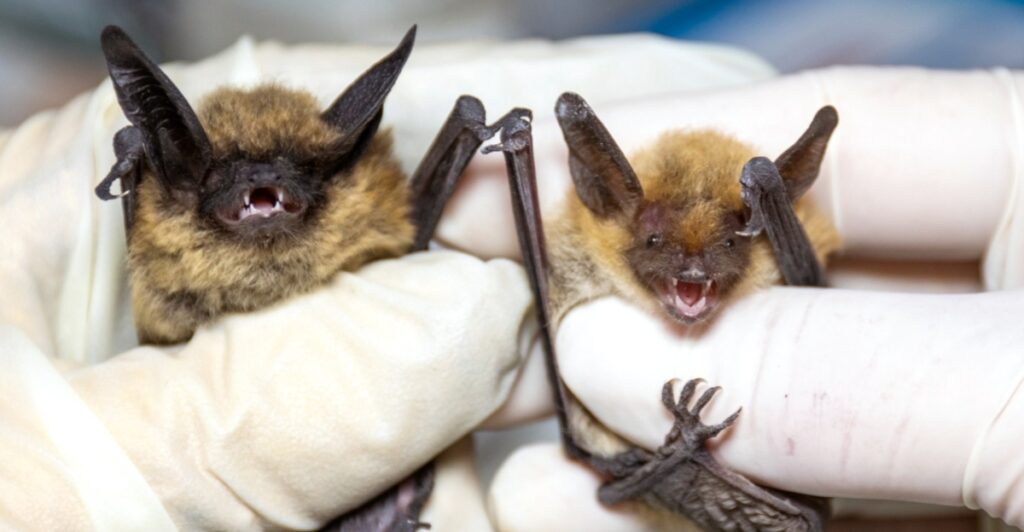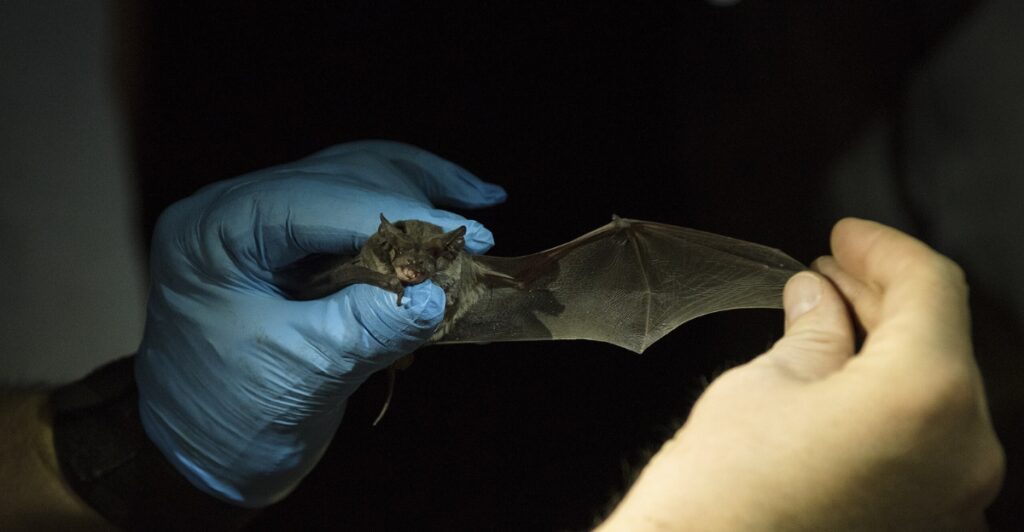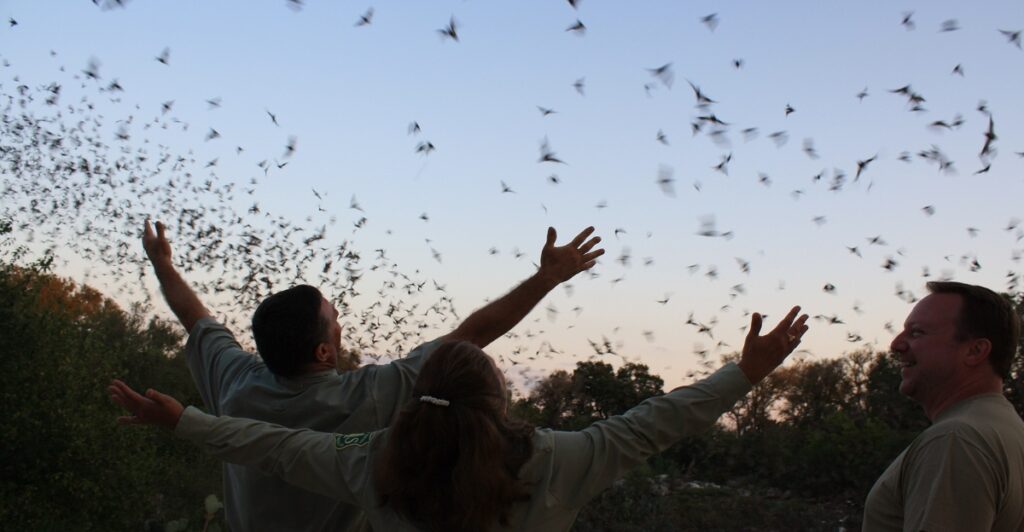
A deadly fungus called Pseudogymnoascus destructans, which has killed millions of bats in North America, has now spread to Southern California. Known for causing white-nose syndrome (WNS), it poses a severe threat to bat populations vital to ecosystems and agriculture. While no signs of illness have been observed in the state’s bats as of yet, experts warn that California’s diverse bat species may be at serious risk.
The Fungus Expands Its Reach

First identified in New York in 2007, Pseudogymnoascus destructans has steadily marched westward, devastating bat colonies along the way. Its spread into California—confirmed in five counties—raises the stakes for conservation efforts in the state. This pathogen thrives in cold, humid environments and has evolved mechanisms to survive on hibernating bats. Its arrival in Southern California signals a critical challenge for wildlife officials, as local bat species now face a heightened risk of infection.
What is White-Nose Syndrome?

White-nose syndrome manifests as a powdery white growth on bats’ noses and wings, but its effects are far more damaging than appearances suggest. The disease disrupts the hibernation cycle, causing bats to wake frequently, deplete fat reserves, and often starve. It also damages delicate wing membranes, impairing flight and survival. This syndrome has already decimated populations in colder regions and now threatens California’s unique bat ecosystem. Despite its impact on bats, WNS does not pose any direct health risks to humans or domestic animals.
Southern California’s Newest Threat

Recent tests have detected the fungus in San Diego and San Bernardino counties, suggesting it may soon spread further into the region. Although no bats in California have shown clinical signs of WNS so far, history has demonstrated that disease typically follows the fungus’s presence within a few years. Wildlife experts are racing to track the pathogen’s movements, fearing that the effects could be just as devastating for Southern California’s bats as they have been elsewhere.
How the Fungus Reaches Bats

The Pseudogymnoascus destructans fungus primarily spreads through direct contact with bats in hibernation sites. However, humans may unknowingly contribute to its spread by carrying fungal spores on shoes, gear, or clothing. Caves, mines, and other bat roosting areas often become hotspots for transmission. Efforts to limit contamination, such as following decontamination protocols for outdoor equipment, are crucial to slowing the pathogen’s spread and protecting vulnerable bat populations across North America.
California’s Diverse Bat Population at Risk

With 25 species of bats, California is home to some of the most ecologically important flying mammals in the United States. Species such as the Mexican free-tailed bat and Yuma myotis play a vital role in insect control. These bats consume thousands of insects every night, including crop-damaging pests. Declines in their populations could have ripple effects on agriculture, public health, and natural ecosystems. These risks highlight the urgency of conservation efforts as WNS looms over the state.
Farmers Prepare for Costly Consequences

Bats provide invaluable pest control services to agriculture, saving U.S. farmers approximately $3.7 billion annually. Without them, reliance on chemical pesticides would increase, driving up costs and environmental impacts. In California, the nation’s top agricultural state, farms are particularly concerned. A loss of bat populations could affect yields of crops such as almonds, avocados, and grapes. Protecting bats from WNS is not just an ecological priority; it is also an economic necessity for the state’s farming communities.
Testing and Surveillance

Since the fungus was first detected in Humboldt County in 2023, wildlife biologists have ramped up surveillance efforts. Swabs from bat noses and wings are analyzed in laboratories to detect any fungal presence. This testing helps identify areas where white-nose syndrome may soon emerge. Early detection is crucial for implementing preventative measures, but California’s dispersed bat roosts make monitoring efforts challenging. Unlike bats in other regions that gather in large colonies, California’s bats often roost in crevices or under bridges, complicating research.
Could Vaccines be the Answer?

Experimental vaccines may offer a lifeline for bats facing WNS. Researchers are developing methods to immunize wild populations, but the logistics remain daunting. Administering vaccines to individual bats is labor-intensive, and large-scale deployment poses significant challenges. However, some promising techniques, like the use of edible vaccine-laden gels, could simplify the process. While vaccination is not a cure-all, it represents a potential tool for reducing mortality rates and preserving bat populations in areas affected by the fungus.
Feeding Programs to Strengthen Bats

Programs like the Fat Bat Project aims to bolster bats’ chances of surviving WNS by increasing their fat stores before winter. By installing UV lights to attract insects near bat roosts, conservationists create opportunities for bats to feed in abundance. A higher fat reserve helps bats endure the physiological toll of disrupted hibernation cycles. These initiatives are part of a growing effort to mitigate WNS’s impact while longer-term solutions, like vaccines, are being developed.
Probiotics Offer a Potential Solution

In addition to vaccines, researchers are exploring the use of probiotics to combat Pseudogymnoascus destructans. Probiotic powders can be dispersed in bat roosts, coating bats’ skin with beneficial microbes that inhibit fungal growth. This innovative approach aims to create an environment less conducive to the pathogen’s spread. Early trials have shown promise, but more research is needed to determine its effectiveness on a large scale. Probiotics could become a vital part of the toolkit for combating WNS in California and beyond.
Why California’s Bats are Hard to Track

In contrast to the large colonies found in the eastern United States, many of California’s bats roost in dispersed and hidden locations, such as under palm fronds or in freeway overpasses. This makes it harder for researchers to monitor populations and detect early signs of white-nose syndrome. While the fragmented nature of these roosts might slow the spread of the disease, it also complicates efforts to measure its impact and protect vulnerable species from population declines.
A Race Against Time

History has shown that the disease usually follows the fungus within one to two years of its arrival. Wildlife officials in California are working quickly to study its spread and prepare for potential outbreaks. Partnerships between state and federal agencies, universities, and nonprofits are essential in this effort. By sharing resources and knowledge, these groups aim to develop strategies that could slow or even halt the progression of WNS before it devastates California’s bat populations.
Protecting Bats Benefits Ecosystems

Bats contribute to much more than pest control. They play a key role in pollination and seed dispersal, supporting biodiversity and the health of ecosystems. Declines in bat populations could disrupt these processes, leading to broader ecological imbalances. Preserving bats not only helps agriculture but also protects the natural environments that depend on these flying mammals. Efforts to combat WNS are, therefore, critical for maintaining both human livelihoods and the broader health of California’s ecosystems.
How You Can Make a Difference

You can help protect bats by avoiding known roosting sites and following decontamination protocols if you enter bat habitats. Reporting sightings of sick or dead bats, as well as those seen flying during the day in winter, to wildlife agencies is another way to contribute. Avoid handling bats directly, as this can spread the fungus or expose you to diseases like rabies. By staying informed and supporting conservation initiatives, everyone can play a role in safeguarding California’s bats and the ecosystems they support.
Resources:
- California Department of Fish and Wildlife: Invasive Bat Fungus Confirmed in Five California Counties
- Report White-nose Syndrome
- Report a Bat Colony
Stay connected with us for more stories like this! Follow us to get the latest updates or hit the Follow button at the top of this article, and let us know what you think by leaving your feedback below. We’d love to hear from you!







